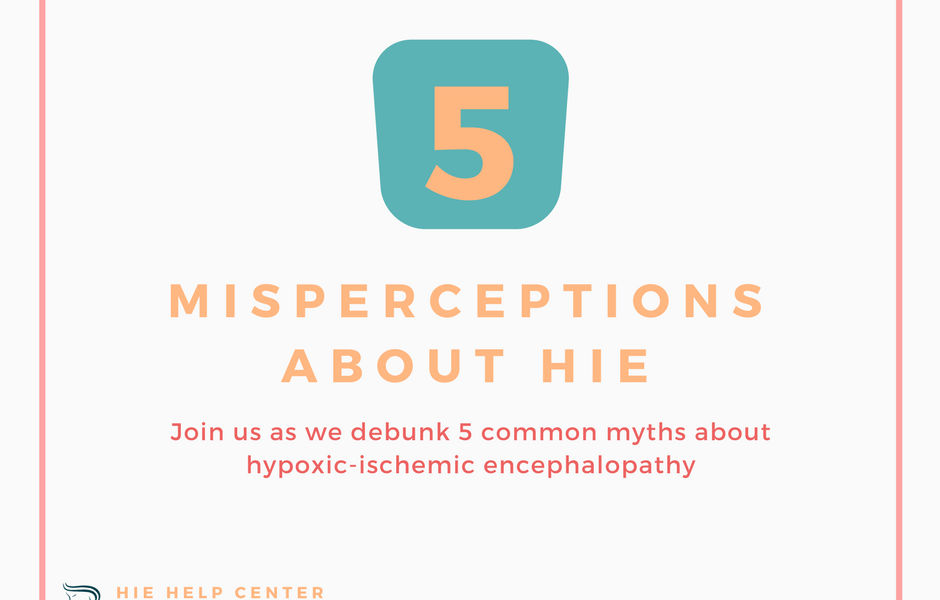Misperception #1: If a child does not develop cerebral palsy, that means they do not have any brain damage. Studies have offered substantial evidence that HIE can and does cause cognitive impairments in children who do not have any motor difficulties (and therefore have not been diagnosed with cerebral palsy) (1, 2). Although some researchers have suggested this is not the case, they are essentially relying on junk science and absence of evidence, which does not constitute evidence of absence. Sometimes these delays are subtle and do not appear until children are school aged, manifesting as difficulties with reading, spelling, and mathematics. Behavioral issues may also be present, although more research is needed on this matter (2).
Misperception #2: It is impossible to diagnose HIE until a child manifests symptoms like difficulties with motor control or fails to reach developmental milestones. HIE should be suspected immediately if there was an abnormal fetal heart rate or other signs of fetal distress during labor and delivery, in addition to certain findings after birth. Warning signs of HIE after birth may include organ dysfunction, breathing problems, low Apgar scores, seizures, abnormal limpness, coma, abnormal blood gas results, and more. If there are any indications an infant may be suffering from HIE, a pediatric neurologist and neonatologist should examine the baby for signs of brain injury. This may involve monitoring by electroencephalogram and ordering an MRI, among other tests (3).
Misperception #3: Treatment for HIE is only supportive. In the not-too-distant past, this was true: treatment of HIE essentially meant mitigating the symptoms, whether that mean physical therapy, use of a ventilator, or drugs to prevent seizures. More recently, infants with HIE have benefitted greatly from hypothermia therapy (also known as cooling therapy or brain cooling), which was found useful by numerous studies including a 2013 Cochrane review (4). If a baby’s body or brain is cooled down below normal body temperatures (between 92.3 and 95 degrees Fahrenheit) within six hours of birth, this can slow the baby’s metabolic rate, allowing damaged cells to recover and preventing more severe harm.
Misperception #4: If HIE causes cerebral palsy, that means the child’s motor abilities will worsen throughout their lives. All infants are somewhat lacking in motor control, which can make it challenging to tell if an oxygen-depriving injury has resulted in cerebral palsy or not. Often, a child will not be diagnosed with cerebral palsy until two years or older, but the condition is not degenerative. It may simply become more apparent as a child ages and fails to meet developmental milestones (5). However, although the brain injury will not become worse with age, it is important to note that certain symptoms may become more pronounced without proper care, or less pronounced with certain interventions. For example, without regular physical therapy, muscles may become tighter over time. Likewise, with a strict therapeutic regimen, flexibility may improve.
Misperception #5: Injuries causing HIE can only occur in neonates. HIE can occur later in life as a result of oxygen-depriving incidents such as near-drowning, asphyxiation, cardiac or respiratory arrest. Even in developed brains, HIE can have devastating neurological effects (6). Fortunately, hypothermia therapy also holds promise in preventing adult brain damage (7).
About the HIE Help Center and ABC Law Centers
The HIE Help Center is run by ABC Law Centers, a medical malpractice firm exclusively handling cases involving HIE and other birth injuries. Our lawyers have over 100 years of combined experience with this type of law, and have been advocating for children with HIE and related disabilities since the firm’s inception in 1997.
We are passionate about helping families obtain the compensation necessary to cover their extensive medical bills, loss of wages (if one or both parents have to miss work in order to care for their child), assistive technology, and other necessities.
If you suspect your child’s HIE may have been caused by medical negligence, please contact us today to learn more about pursuing a case. We provide free legal consultations, during which we will inform you of your legal options and answer any questions you have. Moreover, you would pay nothing throughout the entire legal process unless we obtain a favorable settlement.
You are also welcome to reach out to us with inquiries that are not related to malpractice. We cannot provide individualized medical advice, but we’re happy to track down informational resources for you.
Related Reading:
Window of Time to Provide Hypothermia Therapy May Be Longer Than Previously Thought
Sources:
- Does perinatal asphyxia impair cognitive function without cerebral palsy?
- Long-term cognitive and behavioral consequences of neonatal encephalopathy following perinatal asphyxia: a review
- Neonatal Hypoxic Ischemic Encephalopathy
- Cooling for newborns with hypoxic ischaemic encephalopathy
- Cerebral Palsy: Hope Through Research
- Hypoxic-ischaemic encephalopathy (adults and children)
- Post cardiac arrest therapeutic hypothermia in adult patients, state of art and practical considerations


